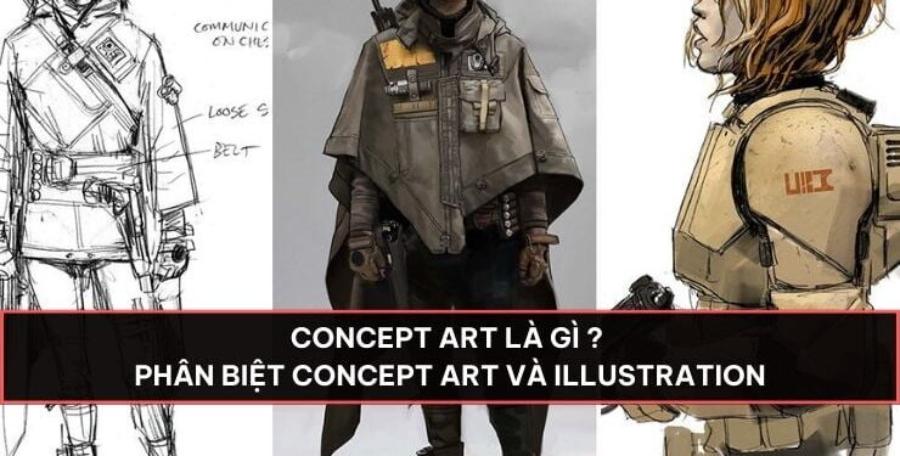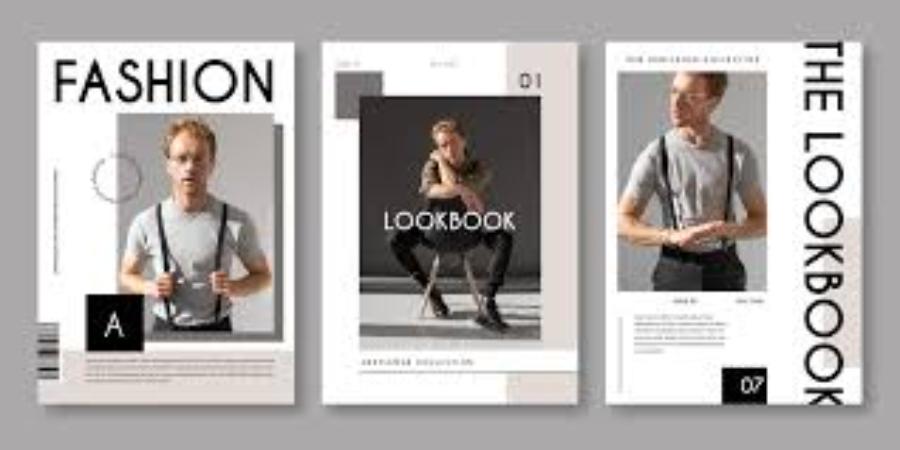Best Selling Products
Exploring Concept Art: Definition, Process and Applications (Part 1)
Nội dung
- 1. What is Concept Art?
- 2. The Important Role of Concept Art
- 3. Common Types of Concept Art
- 3.1. Character Design
- 3.2. Environment Design
- 3.3. Prop Design
- 3.4. Creature Design
- 3.5. Storyboard
- 4. Concept Art Creation Process
- 4.1. Research and Document Collection
- 4.2. Sketching Ideas
- 4.3. Edits and Improvements
- 4.4. Finalization and Final Decision
- 5. Conclusion
Learn what concept art is and why it's important in creative industries like games, film, and animation. Explore the basic principles, processes, and practical applications of concept art in this article.

In the creative world, the term Concept Art is always mentioned when talking about character design, scenes or visual elements in film, game or animation projects. This is the first step in the process of forming ideas and building images for artistic products. Despite its important role, many people still do not fully understand the nature and influence of Concept Art. This article sadesign will help you learn what concept art is , its process and role in creative industries, especially in the fields of games, movies and animation.
1. What is Concept Art?
Concept Art is an image or drawing created to represent an initial idea for a creative project. It is an important step in the production process, helping creators, artists, and producers visualize worlds, characters, and settings before they develop the details. It is commonly used in the film, game, animation, advertising, and other creative design projects.
.jpg)
While the final design of creative products can include intricate details, Concept Art is essentially quick sketches, meant to test and clarify ideas. Concept artists use these images to help creators, directors, or production team members understand the visual style, atmosphere, and aesthetic that the project will be going for.
This is the first step in the creative process, helping to define the style, setting, characters, or other important elements of the project. Concept artists often use their drawing skills and digital tools to create detailed drawings or illustrations, which serve as the basis for the next stages of development. The role of concept art is not only to express ideas, but also to help the production team have a clear and unified view of the aesthetic direction of the project.
2. The Important Role of Concept Art
Concept art plays an important role in the development of creative projects, especially in the fields of film, video games and animation. It is the first step in bringing ideas to life, transforming abstract concepts into concrete images, and guiding the aesthetic style and mood of the entire project.
Concept art not only helps convey the creative vision to the production team, but it is also an important tool for solving design and layout problems. By building worlds, characters, and visual elements, concept art provides a solid foundation for ensuring consistency and high quality in the final product.
.jpg)
Although Concept Art is just the first step in the design process, it plays a vital role in every creative project. Here are some reasons why Concept Art is important:
Conceptualization : Concept Art helps producers and creative teams visualize abstract ideas and translate them into concrete images. This gives everyone on the project a shared vision of the product's direction.
Explore visual styles : In the early stages of a project, Concept Art allows the artist to experiment with different visual styles, deciding which style is best suited for the project.
Save time and money : Instead of starting with a finished product, artists can test and tweak their ideas during the concept art stage, avoiding wasting time and resources on unfeasible designs.
Cross-Department Communication : Concept Art is a great tool for communicating between different departments on a project, such as between the directing, design, production, and engineering teams. It helps unify the overall vision and ensures everything is on track.
Detailed planning : Although Concept Art is not the final design, it will help the relevant departments plan the next steps such as 3D simulation, scene building or character creation.
3. Common Types of Concept Art
Concept Art is not just a simple sketch, but there are many different types, serving different purposes in each project. Below are the common types of Concept Art in the creative industry:
3.1. Character Design
Character Design is a type of Concept Art that focuses on creating a character, from appearance, clothing to unique characteristics such as personality, actions and emotions of the character. These designs help producers and directors understand the character that will appear in the story.
.jpg)
Character Designers draw different character styles that reflect their personalities, physicality, and style. This is especially important in games, animation, and film projects.
3.2. Environment Design
Environment Design is the creation of settings, living spaces, and locations in a story. Artists will draw landscapes, cities, indoor or outdoor spaces, simulating the environments that operate in the story. This is an essential part of building the atmosphere for a creative project.
Whether it's a bright city or a mystical forest, Environment Design determines the colors, shapes, and textures of the virtual world's locations. A beautiful and vibrant setting makes the story more realistic and engaging.
3.3. Prop Design
Prop Design is the design of objects, tools, or props that appear in a story. These designs can include weapons, vehicles, iconic objects, or other elements that interact with characters in the setting.
Prop Design plays an important role in enriching the world of a creative project. These items help define the character's personality and create interesting connections in the story.
3.4. Creature Design
Creature Design specializes in creating strange creatures or animals, which can be monsters, mythical creatures or animals never seen in the real world. These designs require creativity and boundless imagination from the artists.
Creature Design is especially important in science fiction or fantasy projects, such as games or animated films. These creatures often play an important role in the plot and are designed to fit the space and content of the story.
3.5. Storyboard
A storyboard is a series of sketches that describe each scene in a film or video. It is an important tool for planning character actions and movement in a story. Storyboards allow directors and producers to visualize the layout and plot before they start filming or editing a video.
Storyboards are not only limited to the film industry but are also applied in advertising, gaming and animation products.
4. Concept Art Creation Process
The Concept Art creation process can vary depending on the specific project and requirements, but in general, the basic steps will include:
4.1. Research and Document Collection
Before starting to draw, artists will conduct a research phase to gather information about the setting, characters, costumes, objects, and other relevant elements. This is an important step to ensure that everything is accurate and fits the project's world.
.jpg)
The concept art creation process begins with the research and documentation phase, which is an important foundational step to ensure the creativity and quality of the final product. During this phase, the artist needs to gain in-depth knowledge of the subject, style, context, and related elements, and collect reference images, historical and cultural documents, or other relevant visual elements. Thorough research not only helps shape ideas, but also provides a solid foundation for developing unique designs that meet the requirements and goals of the project.
4.2. Sketching Ideas
Once the artist has enough material, they will begin sketching out basic ideas. This stage is often less about details and more about the overall image. These sketches will be discussed and refined.
4.3. Edits and Improvements
Once the ideas have been sketched out, the next step is to refine and finalize. The artist will continue to tweak details, create different versions, and combine elements to suit the project's needs.
4.4. Finalization and Final Decision
Once the designs are approved, the artist will move on to finalizing the drawings. This process includes adding color, shading, detail, and texture to the images.
5. Conclusion
Concept Art is an integral part of any creative project, especially in industries such as film, gaming, and animation. Understanding the concept art creation process and its role will give you a clearer view of how the visual world is built and developed from initial ideas.












































